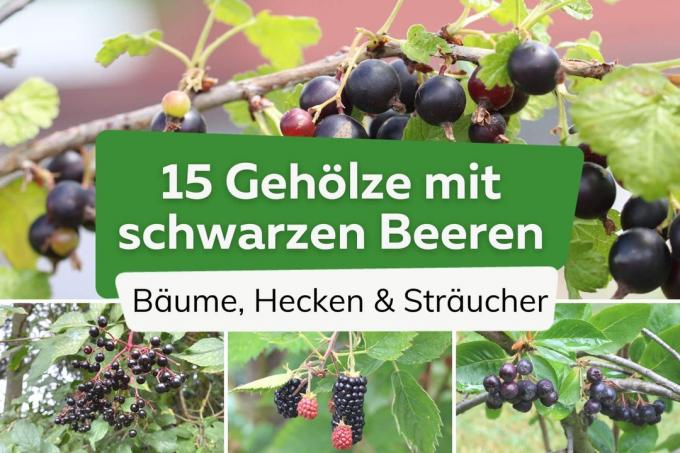
There are numerous shrubs, trees and hedge plants that produce dark, mostly black berry fruits. Some are poisonous, others are considered very healthy fruits. The following are the most common trees that bear black berries.
In a nutshell
- edible black berries always very healthy
- between a few millimeters and several centimeters in size
- have different black coloring
- strongly bitter taste often indicative of toxicity
- black berries mostly less sweet than red berry varieties
Table of contents
- Non-toxic black berries
- Conditionally edible black berries
- Poisonous black berries
- frequently asked Questions
Non-toxic black berries
Burnet rose (Rosa spinosissima)
This frost-hardy rose bush grows up to 150 centimeters high and likes particularly warm, sunny, stony and sandy locations on slopes, in dunes and on fallow fields. The matt black berries are round and reminiscent of rosehips.
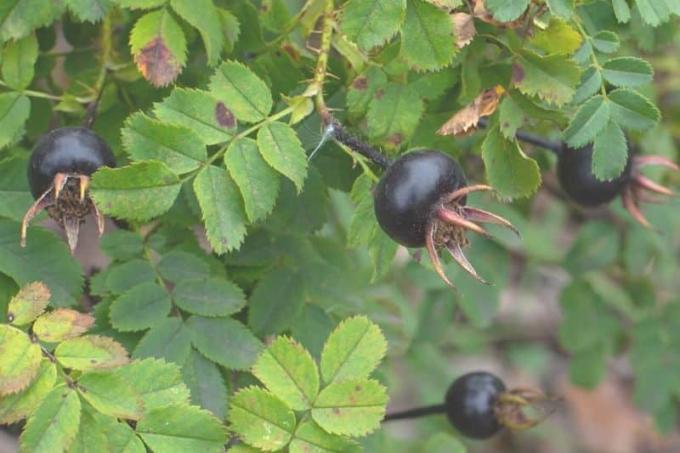
- Size: 4 to 7 centimeters in circumference, like red rose hips
- Harvest time: between September and October
- Taste: tart; slightly bitter aroma
- Additional information: very heat and salt tolerant
Blackberry (Rubus fruticosus)
The blackberry is one of the best known trees with blue-black, shiny berries and can grow up to ten meters high. The location of the shrub should be sunny to semi-shady and the soil should be fresh and rich in humus.

- Size: up to five centimeters
- harvest time: between August and October
- Taste: sweet-sour
- Additional information: very healthy because it is low in sugar, rich in vitamins and lots of fibre; unripe berries taste inedible sour
Blackthorn (Prunus spinosa)
Blackthorn berries change color from blue to black. The tree grows up to five meters high and needs a sunny to partially shaded location and nutrient-rich, fresh soil to grow.
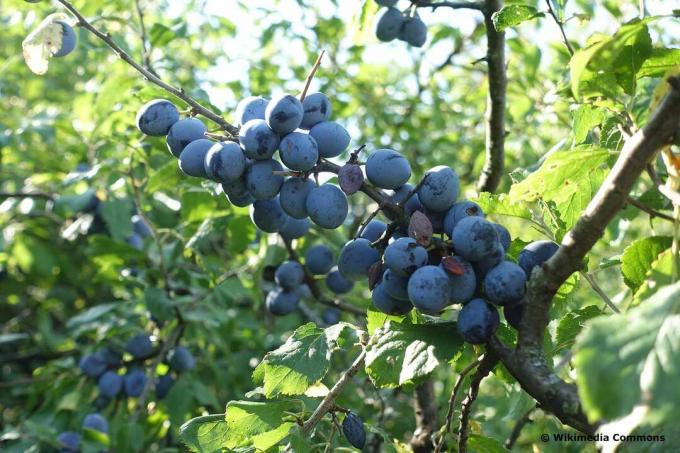
- Size: five to ten centimeters
- Harvest time: between November and December
- Taste: very sour and tart
- Additional information: health-promoting as it is expectorant and anti-inflammatory
A notice: Actually, from a botanical point of view, the fruit of the sloe is not a berry, but a drupe.
Black Chokeberry (Aronia melanocarpa)
Also known as black mountain ash or aronia, this shrub grows up to 2.5 meters high in moist, acidic, sunny to partially shaded locations. Its deep black, round berries grow in groups on a stalk and resemble a drupe.
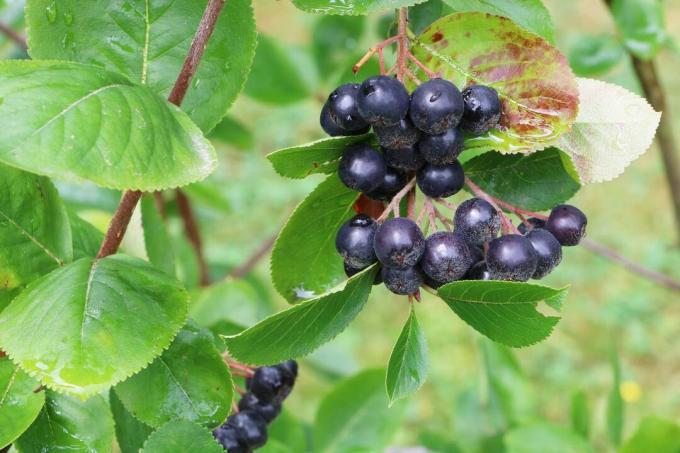
- Size: pea size
- Harvest time: between August and October
- Flavor: tart
- Additional information: mostly used for jelly and juice processing; Superfood due to high vitamin content
Black currant (Ribes nigrum)
One of the best-known shrubs with black fruits are the blackcurrants, which grow to a height of between one and two meters. The berries shimmer slightly and grow luxuriantly in sunny, humus-rich and wind-protected locations, while less fruit can be expected in shady places.

- Size: eight to twelve millimeters
- Harvest time: between June and July
- Taste: mildly sour; slightly bitter note
- Additional information: very healthy; protect against oxidative stress
Black Crowberry (Empetrum nigrum)
The black crowberries owe their name to the deep black berries that grow as individual fruits on the ground-covering dwarf shrubs and grow to a height of up to 50 centimetres. Prerequisite: The location is sunny to shady and the soil is light and stony to sandy.

- Size: 5 to 7 millimeters
- Harvest time: between August and September
- Taste: sour-bitter; Specimens from Northern Europe clearly more aromatic
- Additional information: Plants grow very old; contain a lot of vitamin C; drupe
Conditionally edible black berries
Laurel (Laurus nobilis)
The oval-round laurels of the tree of the same name are blue-black to blackish in color and are mainly used as a spice or for medicinal purposes. The shrub, which can grow up to 10 meters tall, has a strong scent and thrives best in warm, sunny and wind-protected locations in dry to slightly moist soil.

- Size: pea size like black mountain ash
- Harvest time: between July and August
- Taste: tart; slightly bitter
- Additional information: contains essential oil to treat lice and mite infestations
Elder (Sambucus nigra)
The elderberry bush includes over 70 different species, including this variant with the deep black lilac berries, which are red at the beginning. The black elder is the most common variety in Central Europe, grows up to twelve meters high and prefers sunny to semi-shady, moderately moist and nutrient-rich locations.

- Size: circumference up to five centimetres
- Harvest time: between August and September
- Taste: slightly sweet and sour; very aromatic
- Additional information: very rich in vitamin C and potassium; eating it raw can cause stomach problems
A notice: If you have a sensitive stomach, you should only use black elderberries after they have been cooked. Even raw berries contain toxins that are only destroyed by heat.
Black nightshade (Solanum nigrum)
The small, herbaceous black nightshade thrives best in well drained, nutrient-rich soil in a warm, sunny location up to 70 centimeters high. But even in partial shade, slightly shiny, egg-shaped, first green, later black berries form and grow to a height of up to 70 centimetres.
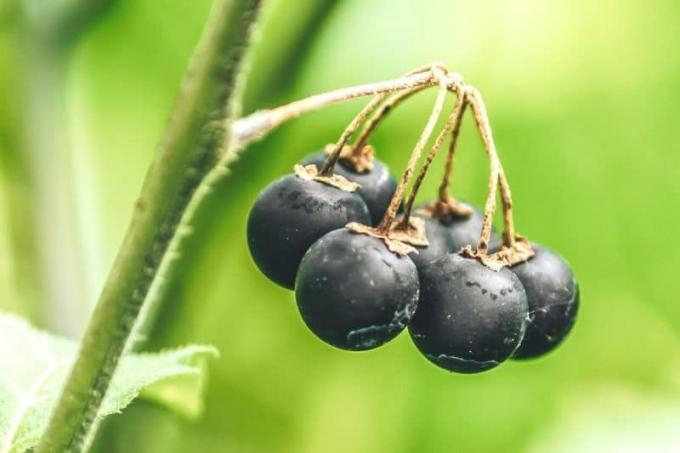
- Size: between six and ten millimeters
- Harvest time: between June and October
- Taste: sweet
- Additional information: unripe berries poisonous; Leaves suitable for consumption as a cooking vegetable
Juniper (Juniperus communis)
Only after a few years does the tree show blue-black berries for the first time, which develop up to a height of twelve meters. For the shrubs or trees to bloom, they need a sunny, humus-rich or acidic location.
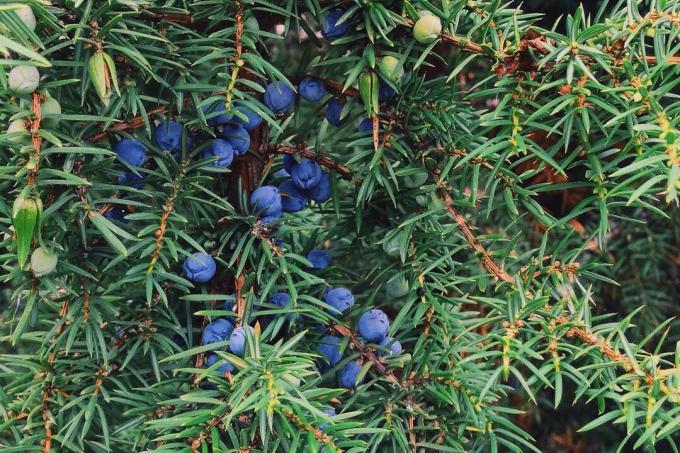
- Size: pea size like black mountain ash
- Harvest time: August
- Taste: refreshing; slight sweetness; minimal aroma of pine needle and camphor
- Additional information: heat effect; often intolerance after more than ten berries
Poisonous black berries
Common ivy (Hedera helix)
Common ivy is a climbing plant whose climbing shoots can grow up to 30 meters long when the site optimal conditions with little sun and humid conditions. On the mostly older specimens, matt-colored berries form, which are bluish or greenish-black when they are fully ripe.
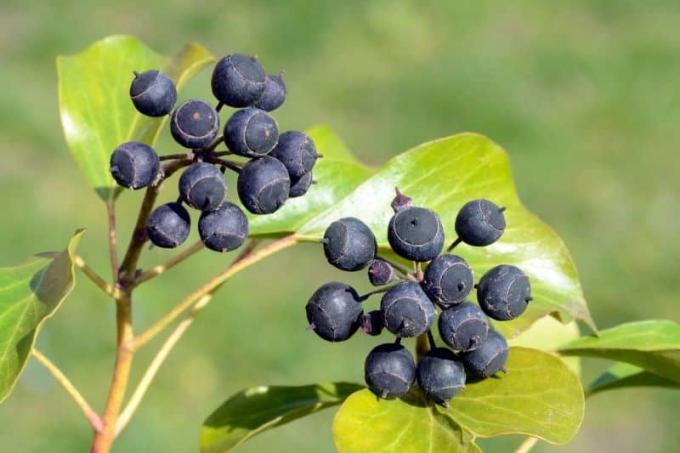
- Size: six to nine millimeters
- Harvest time: between August and October
- Taste: extremely bitter and inedible
- Additional information: conditionally toxic; plant out of the reach of children and pets
Buckthorn (Rhamnus frangula)
Also known as gunberry, this buckthorn plant has a minimal rotting odor to the bark and grows up to four meters, rarely eight meters, in height. It loves damp, sunny locations, where inconspicuous flowers first turn into green, then red spherical ones Stone fruits with two or three seeds ripen, which in the final stage then look like purple-black berries works.
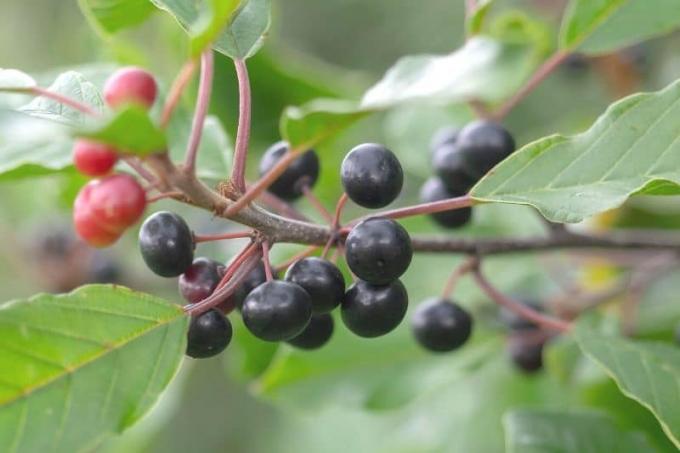
- Size: up to about eight millimeters
- Harvest time: between July and October
- Taste: inedible
- Additional information: all parts of the plant are poisonous
A notice:Despite its toxicity, the bark Used to treat constipation due to its laxative properties. However, we recommend avoiding any kind of self-therapy with it.
Cherry laurel (Prunus laurocerasus)
The cherry laurel grows up to seven meters high is in numerous gardens especially found as a hedge. There it grows best in sunny to semi-shady, loamy or sandy as well as moist, humus-rich locations. After the flowering period between April and May, berries form, which first turn green and then red to a shiny black color until they are ready for harvest.
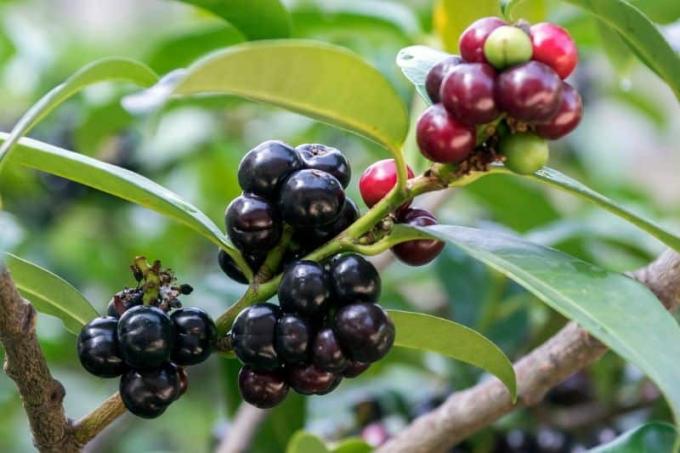
- Size: Circumference between twelve and sixteen millimeters
- Harvest time: between August and September
- Taste: very bitter and inedible
- Further information: all parts of the plant are poisonous
Privet (Ligustrum vulgare)
Privet is very popular as a decorative hedge plant, which is very easy to care for and undemanding in any sunny to partially shaded location quickly reaches a height of up to four meters. The black berries of this tree are shiny and are often seen as fodder for wild animals.

- Size: around three millimeters
- Harvest time: between September and October
- Taste: tart; strongly bitter
- Further information: Berries are poisonous and trigger symptoms of poisoning such as vomiting, nausea and diarrhea even in small quantities
Deadly Nightshade (Atropa belladonna)
Deadly nightshade is known for its highly toxic glossy black berries that resemble cherries. The tree grows up to 1.50 meters high and prefers calcareous, humus-rich, sunny to partially shaded locations.

- Size: cherry size
- Harvest time: between August and September
- taste: furry; slightly sweet; low bitter note
- Additional information: Berries contain intensely toxic alkaloids such as L-hyoscyamine, atropine and scopolamine
frequently asked Questions
Chokeberries contain many vitamins in comparatively high amounts as well as essential minerals. Secondary plant substances such as oligomeric proanthocyanides are also present Antioxidants are known and have a protective effect against cardiovascular and vascular diseases exhibit.
Between August and September you should look for complete deep black colored berries with a shine. The skin of the berries feels bulging.
Blackcurrants are considered healthier because they contain five times more vitamin C and twice as much fiber as redcurrants.
